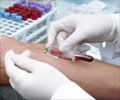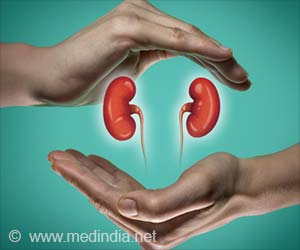Hepatitis is an inflammation of the liver which can progress to cirrhosis (scarring) or liver cancer.

Hepatitis A and E is usually cured with bed rest, fat-free diet, medications and abstaining from alcohol. Hepatitis B is treated with drugs like lamivudine and adefovir dipivoxil. Till recently, hepatitis C was being treated with a combination therapy of pegylated interferon injections and ribavirin oral tablets. However, a new targeted therapy Sofosbuvir (oral) is being used since 2013. This new therapy has a higher cure rate with minimal side effects.
Hepatitis Facts
Hepatitis causes 4000 deaths per day globally. 80% of liver cancer deaths are mainly due to hepatitis. The hepatitis C virus is 10 times more infectious than HIV .
Hepatitis could be prevented by following the right safety measures like consuming safe food and drink, using safe needles and instruments and by using tested blood and blood products. Hepatitis A and B can be prevented with vaccination.
Hepatitis Awareness Week 2015
The year 2015 has witnessed significant developments in the area of hepatitis prevention and treatment. On 12 March 2015, the WHO issued the first hepatitis B treatment guidelines. Globally, there are nearly 240 million people with chronic hepatitis B mostly in Asia and Africa. WHO’s guidelines is a simplified approach to prevention, treatment and interventions in countries with limited resources.
Hepatitis awareness week is a global campaign intended to create and increase awareness of this deadly disease and provide support to people living with it. This is the seventh year of hepatitis awareness week. Campaigns usually encourage people to get tested for the virus, take steps towards prevention like using vaccines and lead a healthy life to minimize damage from the virus. Hepatitis awareness week is important to promote public health. Since chronic hepatitis is asymptomatic in the beginning stages, majority of them go undiagnosed. It is important to test early and take steps to prevent further deterioration.
World Hepatitis Day and the Campaign 2015
World hepatitis day is a day to show solidarity and support to those suffering from hepatitis. It is an opportunity to bring together patients, families, communities, medical establishment and the general public to put up a united fight against this deadly virus. Some of the objectives are:
1. Improve public health through mass awareness campaigns.
2. Make people aware of the mode of transmission and take preventive measures.
3. Increase awareness about the hepatitis A and B vaccine.
4. Encourage screening of pregnant mothers and new-born babies.
5. Conduct testing camps.
6. Educate patients on various treatment options.
7. Educate healthcare workers and professionals on precautions to avoid infection while handling infected people.
8. Increase awareness on infected, hazardous waste disposal methods to prevent infections amongst general public.
This year, WHO and World Hepatitis Alliance have announced the campaign theme as “Prevention of Viral Hepatitis.” The campaign aims to boost the global profile of hepatitis amongst public health officials, policy makers and healthcare specialists to strengthen measures to prevent the disease. This campaign has been put in place considering that the best measure against this deadly virus is prevention. Transmission of hepatitis can be prevented with simple measures like vaccination and good hygiene.
Hepatitis Prevention: Significance for India
Though around 600, 000 people die each year from hepatitis B, till date the Indian government does not have a national public health policy to deal with hepatitis B and C. Most people in developing nations like India are unaware of their infection as they do not get screened on time. According to the Director of ILBS (institute of liver and biliary sciences, New Delhi), Prof Shiv Sarin, chronic hepatitis infections cause 30% of liver cirrhosis and 40-50% of liver cancers in India. The institute is focused on prevention and management of viral hepatitis and committed to making India “hepatitis-free by 2080.”
In India’s first ever consultation meeting organized by ILBS and the WHO Country Office for India in 2014, several measures were discussed for prevention, spread, management and treatment of hepatitis.
Some of the significant steps included:
1. Education and awareness among public health workers and the general public.
2. Standardization of blood bank practices and mandatory NAT (nucleic-acid testing) to prevent transfusion-related spread.
3. Identification of high-risk populations.
4. Improve vaccination coverage.
5. Improve access to treatment and drugs.
6. Improve sanitation and provide safe drinking water.
7. Improve public awareness of personal hygiene and safe food habits.
Reference Links:
http://www.worldhepatitisalliance.org/
http://www.who.int/hiv/mediacentre/news/whd2015_preventhepatitis/en/
http://hepfree.nyc/hepbaware/#sthash.Ov40FPy6.dpbs
http://www.hepatitisfoundation.org.nz/index.php/about-us/
http://www.who.int/features/qa/76/en/
http://www.nlm.nih.gov/medlineplus/magazine/issues/spring09/articles/spring09pg25.html
http://www.ilbs.in/index.php?option=com_content&view=article&id=446:press-release-1st-round-table-consultation-meeting-on-viral-hepatitis-in-india-gaps-challenges-and-priorities&catid=65:latest-news&Itemid=81
Source-Medindia















